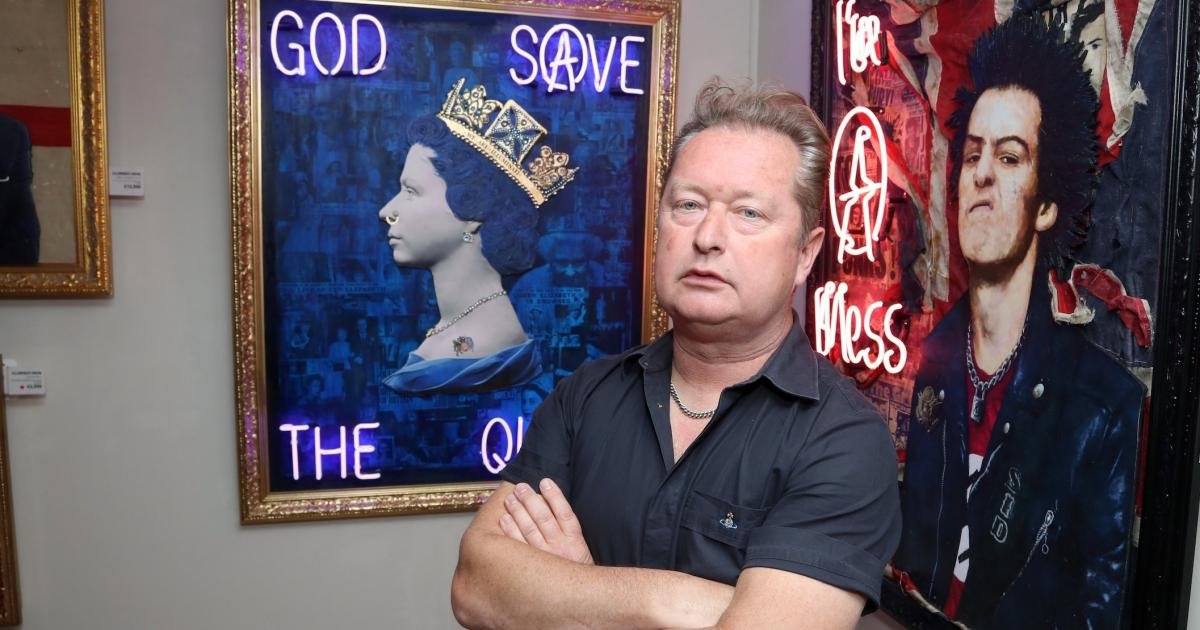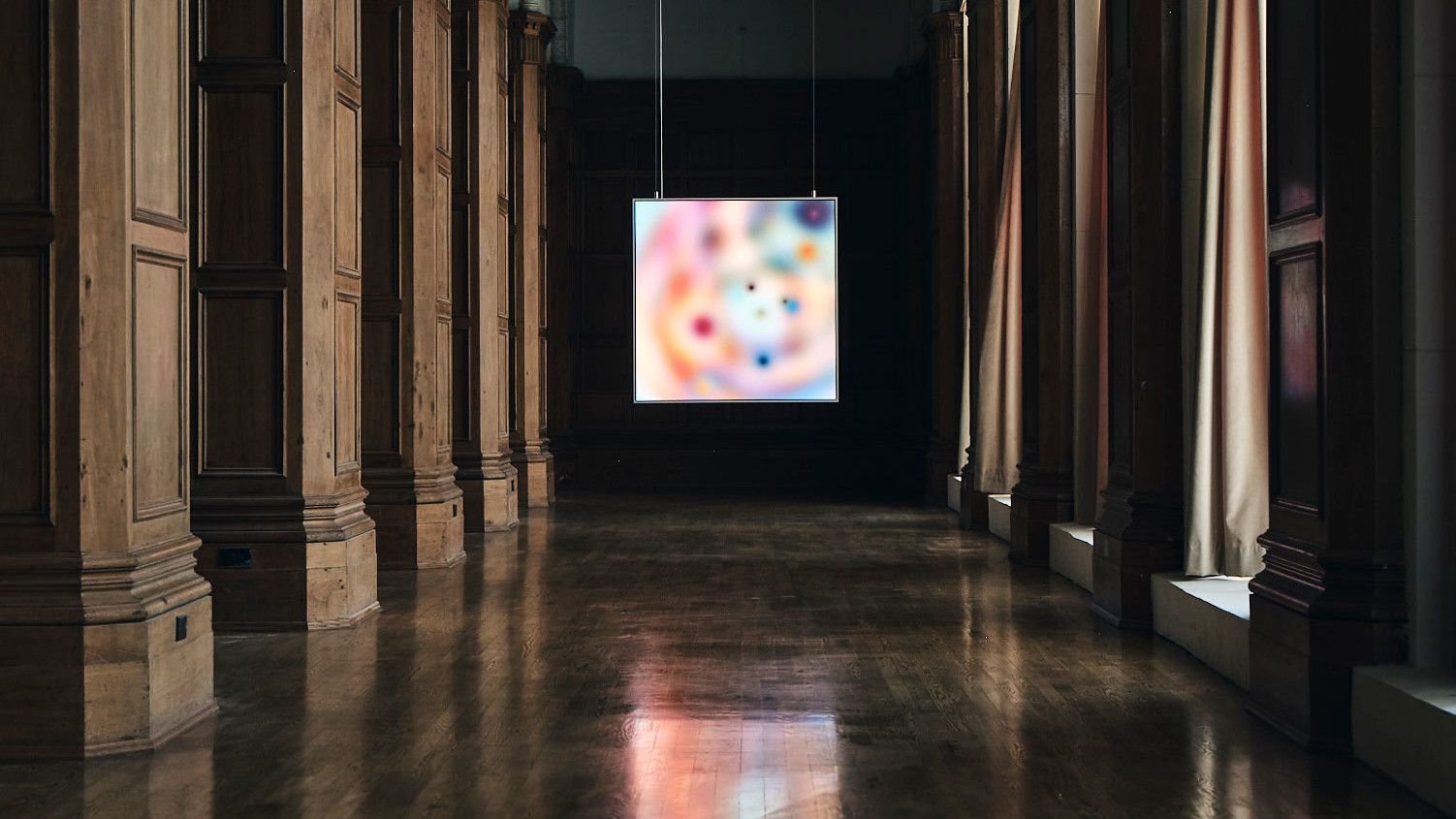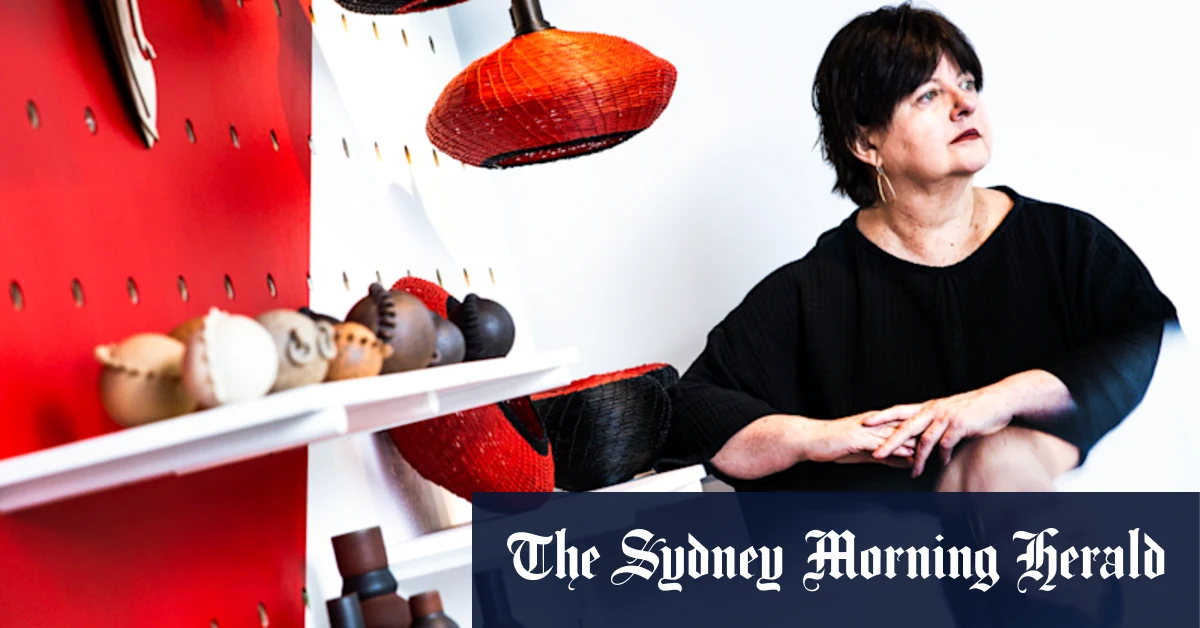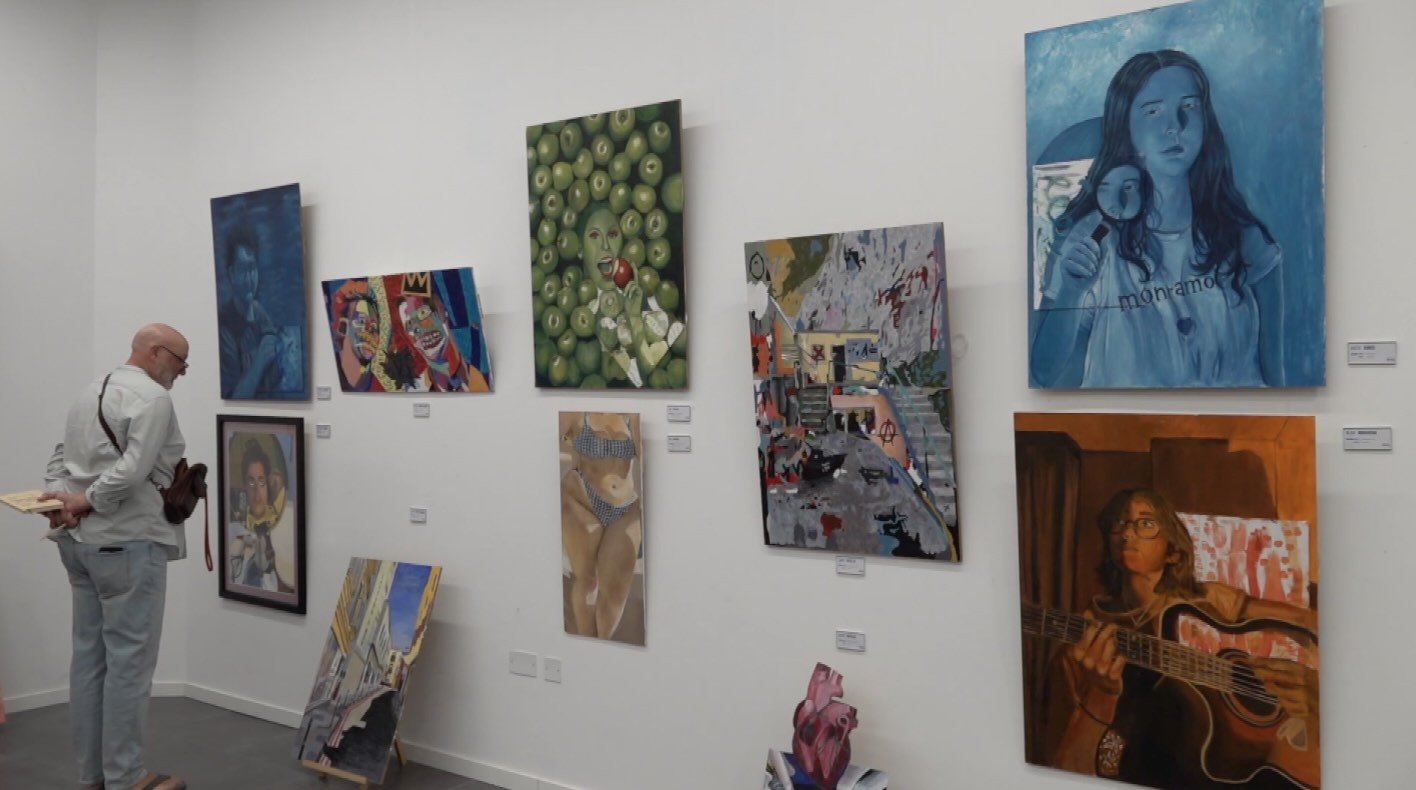From a far away, transcontinental 8,000 miles come both Moriya and Trevor Jackson and their treasure trove of art — to which they feel connected — often historical, representational, or shamanistic.
South African art is among the oldest in the world, like Bushman art discovered in caves. Local tribal art may include dancing figures, references to magic, crafts, social issues, and animal images. We see a lot of earthy and warm tones, plus red, white, gray, and black palettes.

The two painted ceramic sculptures frame a shelf displaying a head rest and African artifacts.
Moriya added, “Our collection also includes [pieces] created by our talented daughters, including African traditional bead work, sculpture, and objects like African pillow rests.”
Trevor notes a thread in their collection of painted art being particularly inclusive of the female face.

Moriya standing in bedroom by art of three feathered women at the Moulin Rouge by Jacque Cobbry.
Residing in Brookhaven with black “lab” mix Thandi, meaning “beautiful one” in Zulu, the Jacksons used a deep chocolate paint color to make the art “zing,” along with a dramatic curved entrance wall to capture the wondering eye.
Marcia: How and where did you amass your art, and how does that relate to your emigration journey to the U.S.? You brought all the art from there with you?
Trevor: Most of our art was collected from Cape Town galleries which we brought with us together with indigenous African artifacts accumulated from South Africa. A part of our collection includes intricate Ndebele (African Tribe) beadwork for women’s and children’s ceremonial skirts, as well as a collection of Zulu and Xhosa headrests used as traveling “pillows.” Note that the Zulu people are the largest ethnic group in South Africa (around 14 million people chiefly from the Northern Nguni); and the Xhosa are a Bantu people who were known for herding and hunting.
Moriya: Our collection of antique sterling silver miniature spoons, vesta boxes, cigarette cases, fob watches and ink wells are on display also … much inherited from our parents.

A Robert Slingsby 1989 abstract of a “future man” sitting atop of a ceremonial bull.
Marcia: Who are your favorite artists?
Trevor: Robert Slingsby, a multi-disciplinary artist focused on traditional African art and culture reflecting geometry and spirituality in a contemporary style. His work stems chiefly from East Africa’s Omo Valley and Namibia. He uses a multi-disciplinary approach — painting, working in bronze, stone, wood, steel, glass and charcoal.
Hardy Botha, whose miniature circus act paintings are intriguing; and my late father-in-law, Morris Adler, whose wooden sculptures express movement and character, both of which have a special place in our home.

The foyer displays a cylinder with rocks, sticks; (above) framed creation of printer blocks compiled by Barbara and Trevor Jackson (1977).
Moriya: The Pieter van der Westhuizen original oil of a women’s face on the lounge wall was purchased at an auction in Cape Town and is one of our treasures. The other female art works are by Thelma Chiat, who generally did not sell her art; and the other large portrait is by Hannetjie de Clerq, one of her earlier works, also bought from a gallery in Cape Town.
We have also bought art locally from some Bennett Street Galleries where we chose this dramatic gold “scene stealer” by Mexican artist Paola, who has a painting in the Mexican National Museum.
Marcia: Share what your daughters contributed and their artistic journey.
Moriya: Our three daughters are all accomplished artists who all graduated from top art colleges. The eldest, Kim, a painter, the middle, Martine, a ceramist and clay sculptor, both graduated cum laude from the University of Cape Town. Marissa, the youngest, graduated from the School of Visual Arts in New York with photography as her major.
Kim Jade Jackson graduated from Michaelis, the art college at the University of Cape Town. She painted the large vertical oil in the living room in 1998. (Kim Jade was featured in the Atlanta Jewish Times Chai Style column Jan. 28, 2022).
The photograph of the young girl holding a flower was styled and taken by daughter Marissa as part of her graduating portfolio.

Trevor stands by daughter artist Kim Jade Jackson’s vertical oil painted in 1998 and (left) Oil by Stefan Raubenheimer.
Marcia: You are in the countertop business. How does that play into this house?
Trevor: My business is CMG Granite LLC. The countertop movement today has moved from granite to 90 percent quartz because the latter has become so user-friendly, in that it is virtually stain-resistant which provides low maintenance. Quartz also offers almost identical marble “lookalikes” as well as subtle cool white, cream and grey tones which coordinate well with current cabinet shades.
Marcia: Why the deep chocolate walls?
Trevor: The chocolate brown walls in the entrance foyer, hall, and dining room were ostensibly selected to reflect the African beadwork on the wall as well as the Succuri granite-veined dining room table which was made specifically for us by my factory.
Marcia: You are a residential realtor?
Moriya: I’ve been with Sotheby’s for over 18 years helping clients buy and sell homes in the Sandy Springs, Brookhaven, Buckhead, East Cobb and Alpharetta areas.

Photograph of a young girl holding a flower was styled and taken by the Jacksons’ daughter, Marissa, as part of her final photographic portfolio.
Marcia: Last word…
Trevor: It is an unbeknownst idiosyncrasy that I came to realize that most of our paintings are of female faces.
Moriya: Maybe it’s because you are surrounded by daughters!







